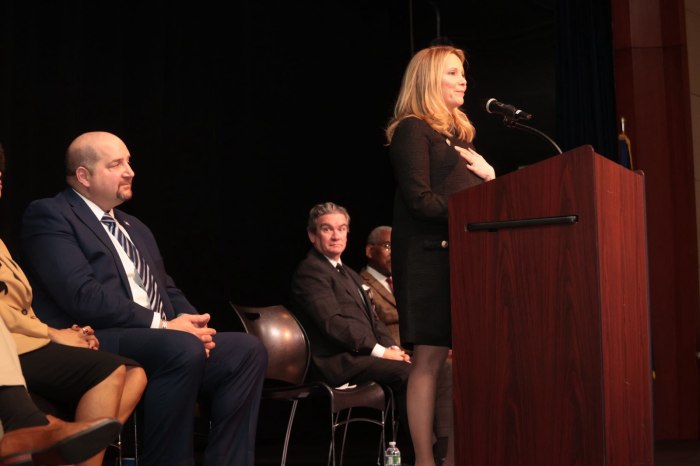By Allan Sloan, ProPublica
This story was co-published with the Washington Post.
Wealth, jobs and pay inequality are big political issues this presidential primary season, and they’re bound to become bigger once the parties pick their nominees. In the plethora of plans candidates tout for tackling these problems, one favored tool stands out: the federal tax code.
But trying to legislate corporate behavior and economic fairness — however you define fairness — through the tax system is a lot trickier than it sounds.
Consider the supposed solution to an equality and social-justice issue debated six elections ago — a law designed to limit how much companies could deduct from their taxable income for lush pay packages to high-paid executives.
In 1992, as now, key electoral issues included inequality and the spectacle of American jobs moving overseas — underscored by a gaping disparity between executives making multiple millions and ordinary workers with stagnant wages.
The idea was to give companies a tax incentive to rein in executive pay or just shame them into it. But a new study done for ProPublica and The Washington Post by S&P Global Market Intelligence shows that the law has had little effect. In fact, the titans of American industry and commerce shrugged off the statute and moved to pay top executives way more than the deductibility limit.
Bill Clinton, the not-yet-a-household-name Arkansas governor, proposed limiting deductions for what he called “excessive executive pay” during his first presidential campaign in the early 1990s. The concept had kicked around Washington for several years and was one of the planks that helped him win the Democratic nomination and deny George H.W. Bush a second term. In 1992, Bush had vetoed a budget bill containing a provision to limit how much companies could deduct for high-paid people.
Clinton’s victory and a Democratic Congress resulted in a tax law change that limited companies’ deductions for executives’ compensation to $1 million per executive per year. That’s the amount that Clinton proposed for chief executives in “Putting People First,” a campaign book that he co-authored with Al Gore.
The compensation deduction limit, known to tax techies as Section 162(m) of the Internal Revenue Code, was adopted in a 1993 bill that also increased taxes on higher-income Social Security recipients and reduced deductions for business meals.
The legislation, however, was stuffed with loopholes. It covered only companies with publicly traded stock; it applied to only five (and since 2007, four) “named executive officers” who aren’t necessarily the highest-paid; and it exempted “performance-based” compensation, including stock options, and huge bonuses based on easily attained goals, allowing unlimited deductions for them.
Section 162(m) fulfilled a campaign promise. But, in hindsight, it’s clear that it has had little or no influence on corporate behavior. Says Sen. Charles E. Grassley (R-Iowa), a leading congressional tax maven: “Regardless of how you feel about limiting compensation through the tax code, the current law is like a gnat on an elephant in accomplishing its goal. It’s easy to swataway, and that’s exactly what many companies do.”
We decided to see whether that was accurate.
Our study looked at the history of executive compensation for the 40 members of today’s “Nifty Fifty” — the 50 companies in the Standard & Poor’s 500-stock index with the highest stock market value — that also reported executive compensation information for 1992, the year before the pay-deductibility limits took effect.
To compare apples to apples, we eliminated the 10 members of the Nifty Fifty, including Facebook and Alphabet (Google’s parent company), that weren’t publicly traded back then or didn’t exist.
In 1992, only 35 percent of the people in our study — executives whose income was reported in companies’ proxy statements — had more than $1 million of income in the categories subject to deductibility limits. (Those are salaries, bonuses and restricted stock that vests over time.) But in 2014, the last year for which corporate salary income is available, the number had risen to 95 percent.
(Read our complete methodology.)
Given inflation, it’s no surprise that more top execs would breach the $1 million cap. But the numbers also showed something completely unintuitive.
From 1992 to 2014, compensation per executive in the limited-deductibility categories rose more rapidly — by about 650 percent, to $8.2 million from $1.1 million — than compensation in categories such as stock options and incentive pay that aren’t subject to deductibility limits. The latter rose by about 350 percent, to $4.4 million from $970,000.
“That’s powerful,” Steven Balsam, a leading academic expert on executive compensation practices, said when told what our study showed. Balsam is a professor at Temple University’s Fox School of Business who published a 2012 study on the deduction cap for the Economic Policy Institute. “At best, 162(m) has had a marginal effect,” he said. “It hasn’t had a major impact.”
Some of the companies with the most notable increases in compensation subject to the limit include Allergan (to $77.4 million from $378,000), Cisco (to $75.2 million from $1.1 million), Oracle (to $119.4 million from $4.9 million) and Walmart (to $55.4 million from $2.9 million).
What happened? It turns out that losing deductibility isn’t all that big a deal to companies — we estimated the effect of lost deductibility on corporate profits at only about 0.2 percent in 2010 for the companies in Balsam’s study. And there’s no reason to think those numbers have changed much.
(The 0.2 percent figure is based on Balsam’s estimate that the 7,248 companies in his study paid an extra $2.5 billion of federal tax because of lost deductibility in 2010, and on S&P Global Market Intelligence’s calculation that the 7,722 firms in its slightly larger database had $1.153 trillion in after-tax profits that year.)
“Decisions on the pay mix are not guided by the deductibility factor,” said Steven Seelig, executive compensation counsel for Willis Towers Watson, a big consulting firm. “Compensation committees are certainly mindful of the tax rules and meet the deductibility rules when they can. But the decision on the pay mix that’s appropriate is guided by their companies’ unique circumstances.”
One of the reasons that the deductibility limit has been so ineffectual is that it was watered down from what was originally proposed.
According to coverage by Tax Notes, which tracked the progress of 162(m) in great detail, the intellectual godfather of the legislation was then-Rep. Martin Sabo, a Minnesota Democrat.
Sabo, who represented Minneapolis and some of its suburbs, said in an interview that his goal had been to reduce economic inequality. “My proposal was trying to send a message,” he said. “This was a sort of symbolic thing because I felt that those at the top should care about the bottom.” He had pushed for deductibility limits in the 1992 tax bill that Bush vetoed.
But what became Section 162(m) a year later wasn’t Sabo’s original concept. “What I proposed was that you couldn’t take a tax deduction if the compensation exceeded 25 times the compensation of the lowest-paid employees,” he said.
That idea began life as the Income Disparities Act of 1991. Because it applied to all employees, not just top officers, the legislation would have had a sweeping impact across corporate America. How did it morph into something that affected only a few executives at publicly traded companies?
“I don’t know,” Sabo said.
A hint of what happened comes from former congressman Tom Downey. The New York Democrat was a member of the House Ways and Means Committee and was involved with Sabo’s 1991 legislation, but he left Congress before 162(m) became law.
“There are all sorts of things I did to try to get rich people to pay more in taxes, and none of it worked,” Downey said. All sorts of people were upset by Sabo’s proposal, Downey said, and major attacks “came from my friends in Hollywood.”
It’s doubtful that anything resembling Sabo’s proposal would have been adopted. What Clinton proposed in “Putting People First” — a $1 million cap — was a simpler and easier sell.
“This is an example of a law that’s so watered down it’s meaningless. It’s still on the books, but it has no value,” said Graef “Bud” Crystal, a compensation consultant and critic of excessive executive pay. “It should be put out of its misery.”
Crystal had a 1991 phone conversation with Clinton about limiting deductions for executive compensation that was widely publicized at the time. Crystal said he told Clinton that the proposal not only wouldn’t hold down executive pay, but would hurt shareholders by increasing the after-tax cost of CEO pay packages.
Crystal said that when people told Clinton that the legislation was so diminished it would have no effect, “he said, ‘Bud Crystal made me do it.'” Actually, Crystal said, “I told him just the opposite.”
What does Clinton think of how ineffectual his legislation has been? That’s a mystery. The former president was campaigning in New Hampshire for his wife, and his spokesman declined to respond to a list of detailed questions.
On the campaign trail these days, Republicans say that eliminating the corporate income tax (Sen. Ted Cruz) or cutting it sharply (Donald Trump) will set off a hiring boom. Democrats say that jacking up tax rates (Sen. Bernie Sanders) or changing capital gains rules (Hillary Clinton) will reduce the advantages that rich people enjoy over the rest of the populace.
It’s impossible to know whether any of these ideas will become law. But based on history, it’s a safe bet that if they do, they are not likely to produce the results their proponents predict.
Allan Sloan is an editor-at-large reporting about business and finance for ProPublica. Read his recent story on pension bonds, “When Wall Street Offers Free Money, Watch Out.“
Researcher Derek Kravitz contributed to this report.
ProPublica is a Pulitzer Prize-winning investigative newsroom. Sign up for their newsletter.
































